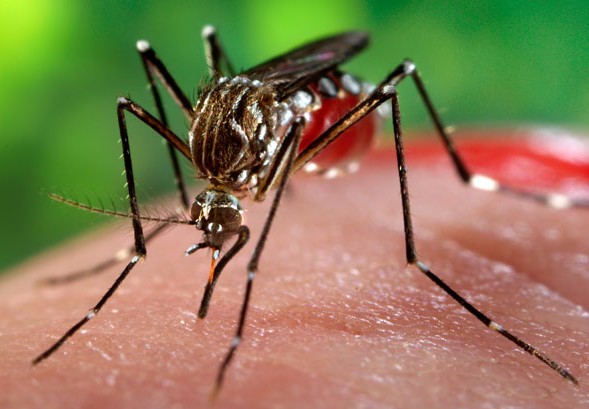[avatar user=”dponieman” size=”thumbnail” align=”left” link=”http://www.acppps.org/who-we-are/diego-a-ponieman/”]By: Diego Ponieman, M.D. M.P.H.[/avatar]Last November, your smartphone may have buzzed with the breaking news: “Zika is no longer a global health emergency, World Health Organization says.” On that day, many concerned citizens breathed a sigh of relief, put their phones back in their pockets, and went on with their days. The mysterious virus, spreading rapidly and causing heartbreaking birth defects, was under control – or so it seemed.
Unfortunately, the World Health Organization’s declaration only meant Zika was more of a known quantity, not that the crisis was over. The epidemic never stopped being a threat, particularly for New York City Latinas. Given deep-seated cultural patterns, from travel to sexual stigmas, Zika is not a seasonal threat or condition.
As warm weather arrives and Zika is back in the headlines, I want to remind our community that the crisis is ongoing, and protection is as critical as ever. The greatest impact of Zika infection in New York City has been in neighborhoods with large Latino populations, especially among Latinas who are pregnant or may become pregnant. Those of us regularly traveling or with family members coming and going from the disease’s epicenters in Latin America and the Caribbean remain at risk no matter the season.
The greatest risk of Zika infection in the U.S. is through sexual transmission from a partner who was infected while traveling. This is likely how scores of Latinas in New York City contracted Zika last year – a number greater than Miami, which received the lion’s share of media attention.
 Zika infected mosquitos have been found in countries across Latin America, the Caribbean and Southeast Asia as well as counties in southern Florida and southern Texas – places where many New York City Latinos travel to visit family and conduct business. For many, avoiding travel to these places is not an option – nor should it be, except for those who are pregnant – but it’s important to take necessary precautions. While traveling to an area with Zika, individuals must use EPA approved insect repellent containing DEET or picaridin, wear long sleeves and pants, avoid standing water, and use window screens and mosquito nets.
Zika infected mosquitos have been found in countries across Latin America, the Caribbean and Southeast Asia as well as counties in southern Florida and southern Texas – places where many New York City Latinos travel to visit family and conduct business. For many, avoiding travel to these places is not an option – nor should it be, except for those who are pregnant – but it’s important to take necessary precautions. While traveling to an area with Zika, individuals must use EPA approved insect repellent containing DEET or picaridin, wear long sleeves and pants, avoid standing water, and use window screens and mosquito nets.
The Zika virus can spread from human to human through sexual transmission and from a pregnant woman to her fetus. While it’s unlikely that Zika-infected mosquitos will appear in New York, even during warmer months, you’re at risk of contracting the virus when you – or your partner – visit areas where there are Zika-infected mosquitos. Current guidelines indicate the Zika virus can remain active in sperm for up to six months. Safe sex practices through the use of condoms and abstinence are the only way to prevent sexually transmitted Zika.
Even if you or a partner don’t think you have the virus but may have been exposed, protection is necessary. The virus’ symptoms are generally mild and can go undetected; they include fever, rash, joint and muscle pain, headaches and red eyes. If a pregnant woman contracts the disease, it can cause devastating birth defects including microcephaly, a condition characterized by a small head and severe brain damage.
Many headlines and news alerts about Zika are conflicting. In Puerto Rico the reported number of babies born with Zika-related birth defects was unexpectedly low, but many experts say the territory is underreporting the true statistic. In the United States, on the other hand, new data shows the risks of Zika are greater than previously thought. Just this month, the U.S. Centers for Disease Control and Prevention (CDC) publicized the findings of their 2016 U.S. Zika Pregnancy Registry research. In 2016, a total of 1,297 pregnancies with possible recent Zika virus infection were reported to the CDC from 44 U.S. states. Of the pregnancies with laboratory-confirmed cases of Zika virus infection, 1 in 10 fetuses or infants had virus-associated birth defects.
There are still many, many unknowns when it comes to Zika. Because Latino populations tend to have strong ties to the regions where Zika remains prevalent, our community is particularly at risk for a public health crisis. Let’s take care of ourselves.
As a community physician, Chief Medical Officer of Advocate Community Providers, a New Yorker, and a Latino, I am committed to keeping my patients and our network of care providers informed about the risks of Zika and the simple preventive measures New Yorkers can take to protect themselves from the disease. New York City health professionals can’t ignore the reality of Zika – the population we serve deserves the most thoughtful, comprehensive, targeted and culturally sensitive health education and care possible.

